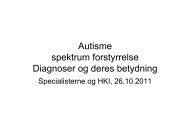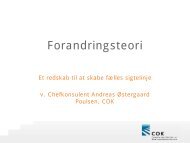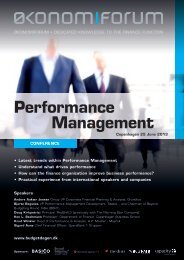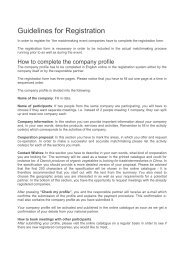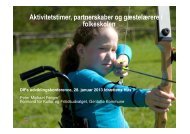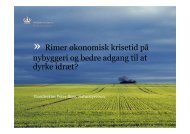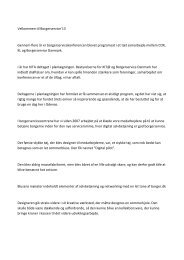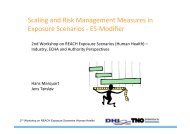Clusters are individuals - VDI/VDE-IT
Clusters are individuals - VDI/VDE-IT
Clusters are individuals - VDI/VDE-IT
You also want an ePaper? Increase the reach of your titles
YUMPU automatically turns print PDFs into web optimized ePapers that Google loves.
these clusters since the establishment of the cluster management<br />
organization. Eventually there is of course a size limit<br />
set by the size of the economy as it has an influence on the<br />
number of players in economic sectors in which clusters can<br />
develop. The large sizes of Finish clusters can be explained<br />
by the fact the majority of the benchmarked clusters <strong>are</strong><br />
rather coordination bodies of smaller clusters in the same<br />
economic field; in this particular case the funding program<br />
“OSKE – Centre of Expertise Program”, which supports the<br />
cluster management organizations, had a significant effect<br />
on the size of the clusters.<br />
2.2.3 COMPOS<strong>IT</strong>ION OF MEMBERSHIP<br />
Figure 5 displays the typical composition of the cluster membership<br />
for each country (only with regard to the clusters<br />
that have participated in the benchmarking project).<br />
With the exemption of Iceland in all countries industry (SME<br />
and Non-SME) is the dominating stakeholder. Swedish clusters<br />
have the lowest sh<strong>are</strong> of industry (56 per cent, SME: 45<br />
per cent) and Finnish clusters, which <strong>are</strong> dominated by SME,<br />
the highest (93 per cent, SME: 88 per cent). The sh<strong>are</strong> of industry<br />
in Icelandic clusters is only 38 per cent.<br />
The sh<strong>are</strong> of R&D institutions and universities is very much<br />
different between the countries. Iceland and Germany have<br />
the highest sh<strong>are</strong> (R&D institutions and universities account<br />
for 24 respectively 13 per cent of all stakeholders), followed<br />
by Denmark (10 per cent), Sweden (10 per cent), Norway (10<br />
per cent), Poland (8 per cent) and Finland (3 per cent). The<br />
composition of the membership can depend on the specific<br />
requirements of the national cluster programs.<br />
GERMANY<br />
SWEDEN NORWAY FINLAND<br />
3%<br />
6%<br />
3%<br />
4%<br />
6%<br />
7%<br />
46%<br />
19%<br />
4%<br />
4% 3% 8%<br />
7%<br />
3%<br />
3%<br />
45%<br />
52%<br />
5%<br />
3%<br />
7%1%<br />
1%<br />
2%1%<br />
2%<br />
1%<br />
5%<br />
7%<br />
4%<br />
7%<br />
18%<br />
6%<br />
4%<br />
11%<br />
12%<br />
80%<br />
DANMARK ICELAND POLAND<br />
7%<br />
3%<br />
5%<br />
5% 5%<br />
16%<br />
4%<br />
6%<br />
2%<br />
3%<br />
6%<br />
10%<br />
4%<br />
2%<br />
14%<br />
60%<br />
11%<br />
11%<br />
22%<br />
6%<br />
5%<br />
4%<br />
49%<br />
4%<br />
10%<br />
14%<br />
12%<br />
SME<br />
Universities<br />
Consultants<br />
Non-SME<br />
Training and education providers<br />
Governmental agencies<br />
R&D institutions<br />
Financials intermediaries<br />
Others<br />
Figure 5: Composition of membership (median value)<br />
20




